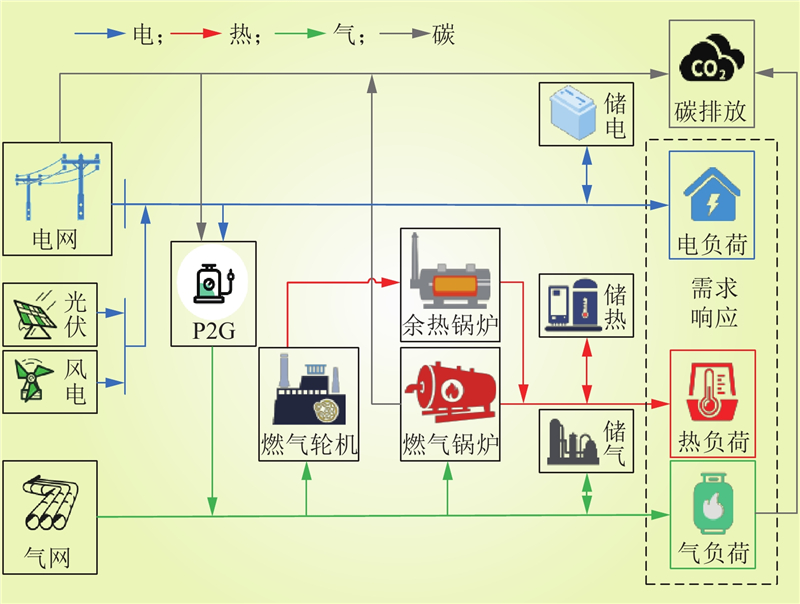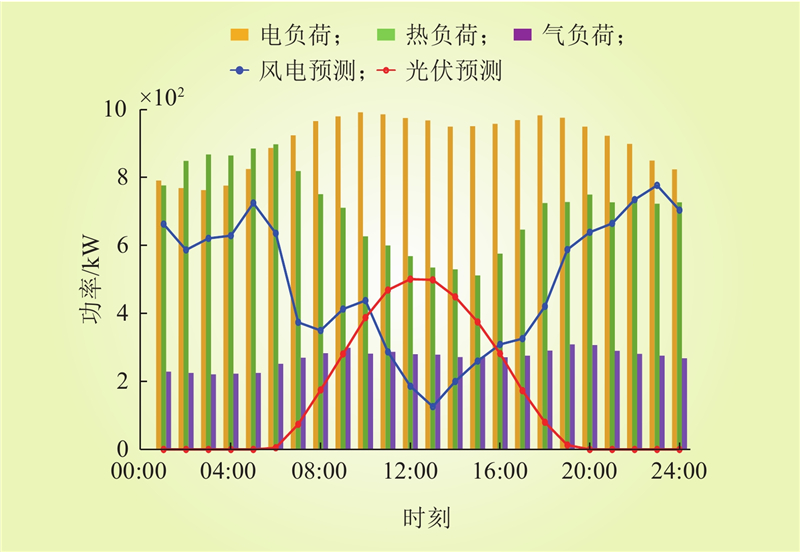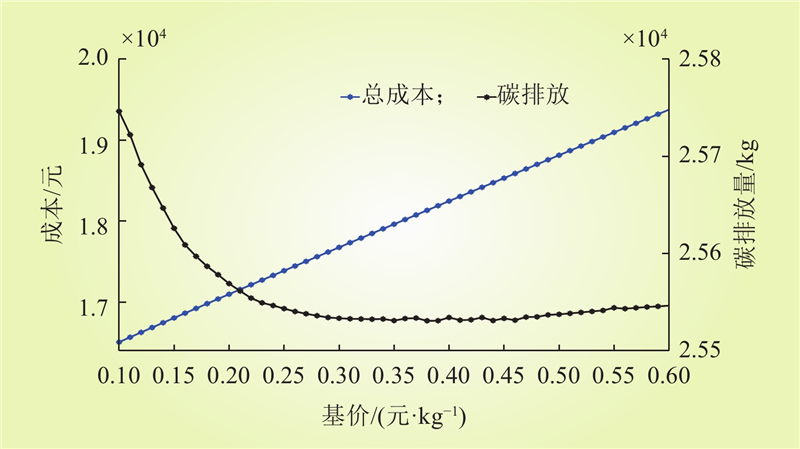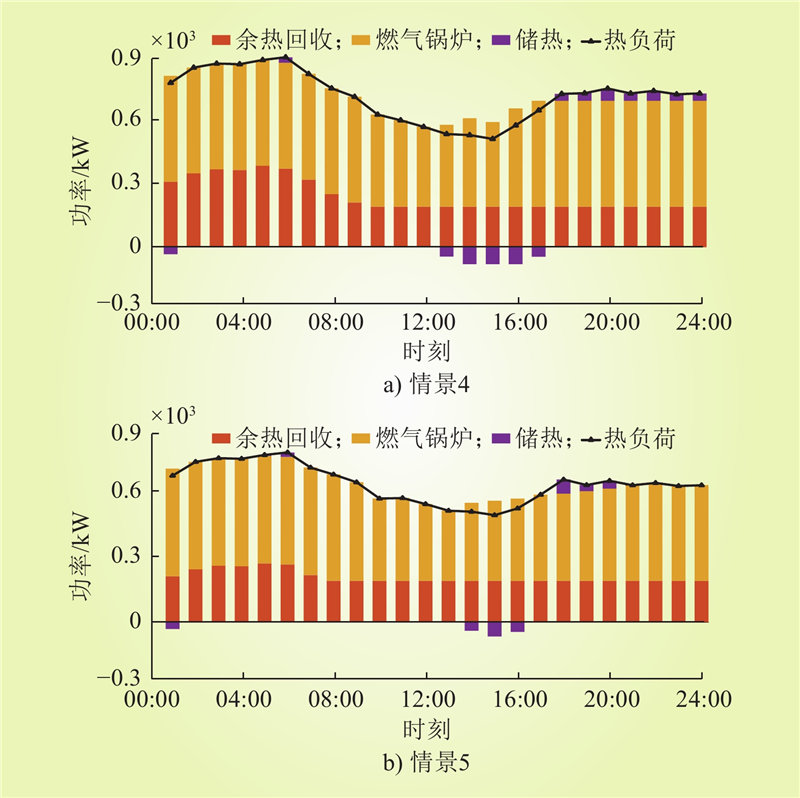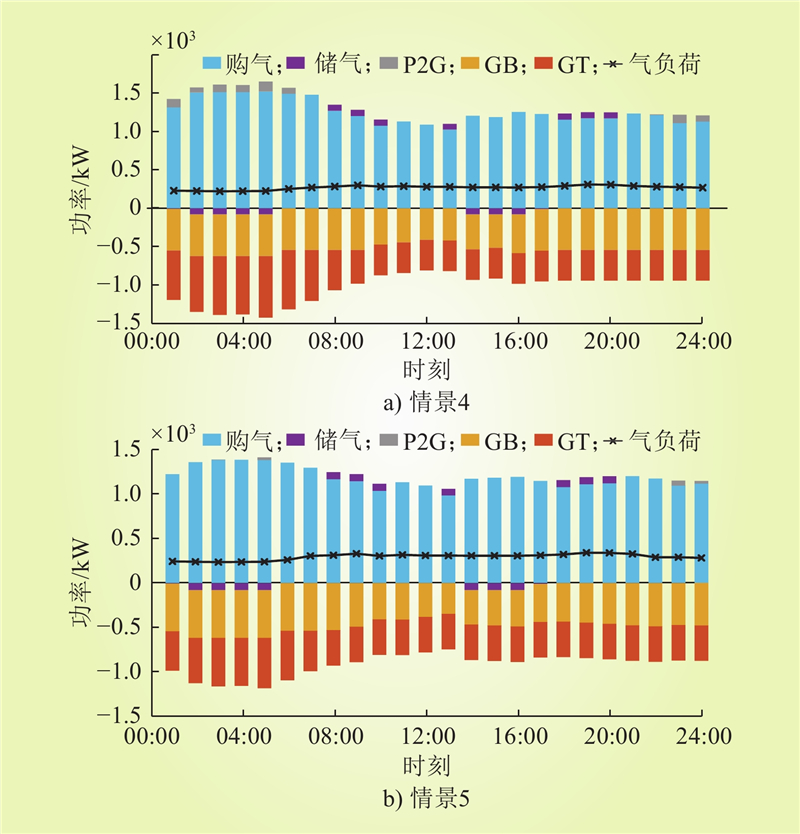| 1 |
张智刚, 康重庆. 碳中和目标下构建新型电力系统的挑战与展望[J]. 中国电机工程学报, 2022, 42 (8): 2806- 2819.
|
|
ZHANG Zhigang, KANG Chongqing. Challenges and prospects for constructing the new-type power system towards a carbon neutrality future[J]. Proceedings of the CSEE, 2022, 42 (8): 2806- 2819.
|
| 2 |
吴艳娟, 张亦炫, 王云亮. 计及多重需求响应的综合能源系统多时间尺度低碳运行[J]. 电力工程技术, 2024, 43 (2): 21- 32.
DOI
|
|
WU Yanjuan, ZHANG Yixuan, WANG Yunliang. Multi-time scale low carbon operation integrated energy system considering multiple integrated demand responses[J]. Electric Power Engineering Technology, 2024, 43 (2): 21- 32.
DOI
|
| 3 |
冯帅, 袁至, 王维庆, 等. 碳交易背景下基于LGPG-P2G的微电网容量优化配置[J]. 电力工程技术, 2023, 42 (3): 157- 167.
DOI
|
|
FENG Shuai, YUAN Zhi, WANG Weiqing, et al. Optimization and configuration of microgrid capacity based on LGPG-P2G in the context of carbon trading[J]. Electric Power Engineering Technology, 2023, 42 (3): 157- 167.
DOI
|
| 4 |
谭显东, 刘俊, 徐志成, 等. “双碳”目标下“十四五”电力供需形势[J]. 中国电力, 2021, 54 (5): 1- 6.
|
|
TAN Xiandong, LIU Jun, XU Zhicheng, et al. Power supply and demand balance during the 14th five-year plan period under the goal of carbon emission peak and carbon neutrality[J]. Electric Power, 2021, 54 (5): 1- 6.
|
| 5 |
孟宇翔, 马刚, 李豪, 等. 基于绿证-阶梯式碳交易交互的源荷互补调度优化[J]. 中国电力, 2023, 56 (9): 149- 156.
|
|
MENG Yuxiang, MA Gang, LI Hao, et al. Optimal Scheduling of Source-Load Complementation Based on Green Certificate-Step Carbon Trading Interaction[J]. Electric Power, 2023, 56 (9): 149- 156.
|
| 6 |
WANG B. Low-carbon transformation planning of China's power energy system under the goal of carbon neutrality[J]. Environmental Science and Pollution Research International, 2023, 30 (15): 44367- 44377.
DOI
|
| 7 |
李政, 陈思源, 董文娟, 等. 碳约束条件下电力行业低碳转型路径研究[J]. 中国电机工程学报, 2021, 41 (12): 3987- 4000.
|
|
LI Zheng, CHEN Siyuan, DONG Wenjuan, et al. Low Carbon Transition Pathway of Power Sector Under Carbon Emission Constraints[J]. Proceedings of the CSEE, 2021, 41 (12): 3987- 4000.
|
| 8 |
张栋顺, 全恒立, 谢桦, 等. 考虑碳交易机制与氢混天然气的园区综合能源系统调度策略[J]. 中国电力, 2024, 57 (2): 183- 193.
|
|
ZHANG Dongshun, QUAN Hengli, XIE Hua, et al. Dispatching Strategy of Park-Level Integrated Energy System Considering Carbon Trading Mechanism and Hydrogen Blending Natural Gas[J]. Electric Power, 2024, 57 (2): 183- 193.
|
| 9 |
李强, 王尧, 胡迎迎, 等. 考虑碳交易成本的输储多阶段协调规划方法[J]. 中国电力, 2023, 56 (12): 199- 205.
|
|
LI Qiang, WANG Yao, HU Yingying, et al. Multi-Stage Coordinated Planning Method for Transmission Network and Energy Storage Considering Carbon Trading Cost[J]. Electric Power, 2023, 56 (12): 199- 205.
|
| 10 |
CHEN H, YANG S, CHEN J, et al. Low-carbon environment-friendly economic optimal scheduling of multi-energy microgrid with integrated demand response considering waste heat utilization[J]. Journal of Cleaner Production, 2024, 450, 141415.
DOI
|
| 11 |
李亚峰, 王维庆, 寇洋, 等. 考虑绿证-碳联合交易与需求响应综合能源系统经济运行[J]. 太阳能学报, 2023, 44 (11): 538- 546.
|
|
LI Yafeng, WANG Weiqing, KOU Yang, et al. Considering green certificate-carbon joint trading and demand response integrated energy system economic operation[J]. Acta Energiae Solaris Sinica, 2023, 44 (11): 538- 546.
|
| 12 |
SUN H, SUN X, KOU L, et al. Optimal scheduling of park-level integrated energy system considering ladder-type carbon trading mechanism and flexible load[J]. Energy Reports, 2023, 9, 3417- 3430.
DOI
|
| 13 |
崔杨, 曾鹏, 仲悟之, 等. 考虑阶梯式碳交易的电−气−热综合能源系统低碳经济调度[J]. 电力自动化设备, 2021, 41 (3): 10- 17.
|
|
CUI Yang, ZENG Peng, ZHONG Wuzhi, et al. Low-carbon economic dispatch of electricity-gas-heat integrated energy system based on ladder-type carbon trading[J]. Electric Power Automation Equipment, 2021, 41 (3): 10- 17.
|
| 14 |
刘金朋, 杨昊, 吴澜, 等. 基于高斯混合模型的居民聚合响应潜力多重置信评估[J]. 电力工程技术, 2023, 42 (2): 20- 28.
DOI
|
|
LIU Jinpeng, YANG Hao, WU Lan, et al. Evaluation of residential demand response potential under multiple confidence scenarios based on Gaussian mixture model[J]. Electric Power Engineering Technology, 2023, 42 (2): 20- 28.
DOI
|
| 15 |
Pandey VC, Gupta N, Niazi KR, et al. Modeling and assessment of incentive based demand response using price elasticity model in distribution systems[J]. Electric Power Systems Research, 2022, 206, 107836.
DOI
|
| 16 |
刘天棋, 张琪, 何川. 考虑气电联合需求响应的气电综合能源配网系统协调优化运行[J]. 中国电机工程学报, 2021, 41 (5): 1664- 1676.
|
|
LIU Tianqi, ZHANG Qi, HE Chuan. Coordinated Optimal Operation of Electricity and Natural Gas Distribution System Considering Integrated Electricity-gas Demand Response[J]. Proceedings of the CSEE, 2021, 41 (5): 1664- 1676.
|
| 17 |
祁兵, 郑顺林, 孙毅, 等. 考虑需求侧动态及耦合特性的激励型综合需求响应优化建模[J]. 中国电机工程学报, 2022, 42 (5): 1783- 1798.
|
|
QI Bing, ZHENG Shunlin, SUN Yi, et al. A model of incentive-based integrated demand response considering dynamic characteristics and multi-energy coupling effect of demand side[J]. Proceedings of the CSEE, 2022, 42 (5): 1783- 1798.
|
| 18 |
李鹏, 吴迪凡, 李雨薇, 等. 基于综合需求响应和主从博弈的多微网综合能源系统优化调度策略[J]. 中国电机工程学报, 2021, 41 (4): 1307- 1321, 1538.
|
|
LI Peng, WU Difan, LI Yuwei, et al. Optimal Dispatch of Multi-microgrids Integrated Energy System Based on Integrated Demand Response and Stackelberg game[J]. Proceedings of the CSEE, 2021, 41 (4): 1307- 1321, 1538.
|
| 19 |
程杉, 陈诺, 徐建宇, 等. 考虑综合需求响应的楼宇综合能源系统能量管理优化[J]. 电力工程技术, 2023, 42 (2): 40- 47, 57.
DOI
|
|
CHENG Shan, CHEN Nuo, XU Jianyu, et al. Optimal energy management of residential integrated energy system with consideration of integrated demand response[J]. Electric Power Engineering Technology, 2023, 42 (2): 40- 47, 57.
DOI
|
| 20 |
李姚旺, 张宁, 杜尔顺, 等. 基于碳排放流的电力系统低碳需求响应机制研究及效益分析[J]. 中国电机工程学报, 2022, 42 (8): 2830- 2841.
|
|
LI Yaowang, ZHANG Ning, DU Ershun, et al. Mechanism Study and Benefit Analysis on Power System Low Carbon Demand Response Based on Carbon Emission Flow[J]. Proceedings of the CSEE, 2022, 42 (8): 2830- 2841.
|
| 21 |
陈锦鹏, 胡志坚, 陈嘉滨, 等. 考虑阶梯式碳交易与供需灵活双响应的综合能源系统优化调度[J]. 高电压技术, 2021, 47 (9): 3094- 3106.
|
|
CHEN Jingpeng, HU Zhijian, CHEN Jiabin, et al. Optimal dispatch of integrated energy system considering ladder-type carbon trading and flexible double response of supply and demand[J]. High Voltage Engineering, 2021, 47 (9): 3094- 3106.
|
| 22 |
LIU D, QIN Z, HUA H, et al. Incremental incentive mechanism design for diversified consumers in demand response[J]. Applied Energy, 2023, 329, 120240.
DOI
|
| 23 |
任恒宇, 韩冬, 任曦骏, 等. 基于时变价格弹性矩阵的深谷电价多目标定价策略[J]. 电网技术., 2024, 48 (3): 958- 967.
|
|
REN Hengyu, HAN Dong, REN Xijun, et al. Multi-objective Deep Valley Electricity Pricing Model Based on Time-varying Price Elasticity Matrix[J]. Power System Technology., 2024, 48 (3): 958- 967.
|
| 24 |
SUN P R, HAO X J, WANG J, et al. Low-carbon economic operation for integrated energy system considering carbon trading mechanism[J]. Energy Science & Engineering, 2021, 9 (11): 2064- 2078.
|
| 25 |
张涛, 郭玥彤, 李逸鸿, 等. 计及电气热综合需求响应的区域综合能源系统优化调度[J]. 电力系统保护与控制, 2021, 49 (1): 52- 61.
|
|
ZHANG Tao, GUO Yuetong, LI Yihong, et al. Optimization scheduling of regional integrated energy systems based on electric-thermal-gas integrated demand response[J]. Power System Protection and Control, 2021, 49 (1): 52- 61.
|
| 26 |
HUANG W, ZHANG N, KANG C, et al. From demand response to integrated demand response: Review and prospect of research and application[J]. Protection and Control of Modern Power Systems, 2019, 4 (1): 1- 13.
DOI
|
| 27 |
许刚, 郭子轩. 考虑多态能源系统中用户多维响应特性的激励型综合需求响应优化策略[J]. 中国电机工程学报, 2023, 43 (24): 9398- 9411.
|
|
XU Gang, GUO Zixuan. Optimization strategy for incentive-based integrated demand response considering multi-dimensional user response characteristics in multi-energy system[J]. Proceedings of the CSEE, 2023, 43 (24): 9398- 9411.
|
| 28 |
贠保记, 张恩硕, 张国, 等. 考虑综合需求响应与“双碳”机制的综合能源系统优化运行[J]. 电力系统保护与控制, 2022, 50 (22): 11- 19.
|
|
YUN Baoji, ZHANG Enshuo, ZHANG Guo, et al. Optimal operation of an integrated energy system considering integrated demand response and a "dual carbon" mechanism[J]. Power System Protection and Control, 2022, 50 (22): 11- 19.
|
| 29 |
李天格, 胡志坚, 陈志, 等. 计及电-气-热-氢需求响应的综合能源系统多时间尺度低碳运行优化策略[J]. 电力自动化设备, 2023, 43 (1): 16- 24.
|
|
LI Tiange, HU Zhijian, CHEN Zhi, et al. Multi-time scale low-carbon operation optimization strategy of integrated energy system considering electricity-gas-heat-hydrogen demand response[J]. Electric Power Automation Equipment, 2023, 43 (1): 16- 24.
|



